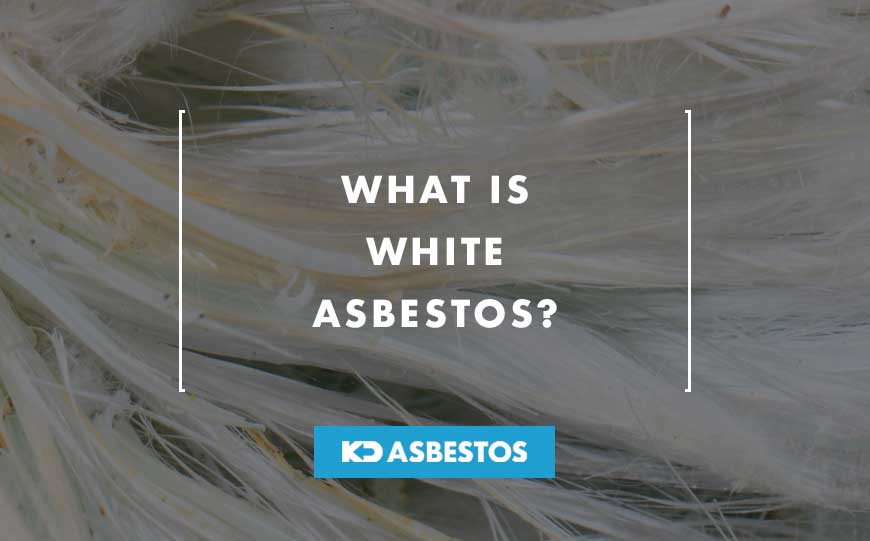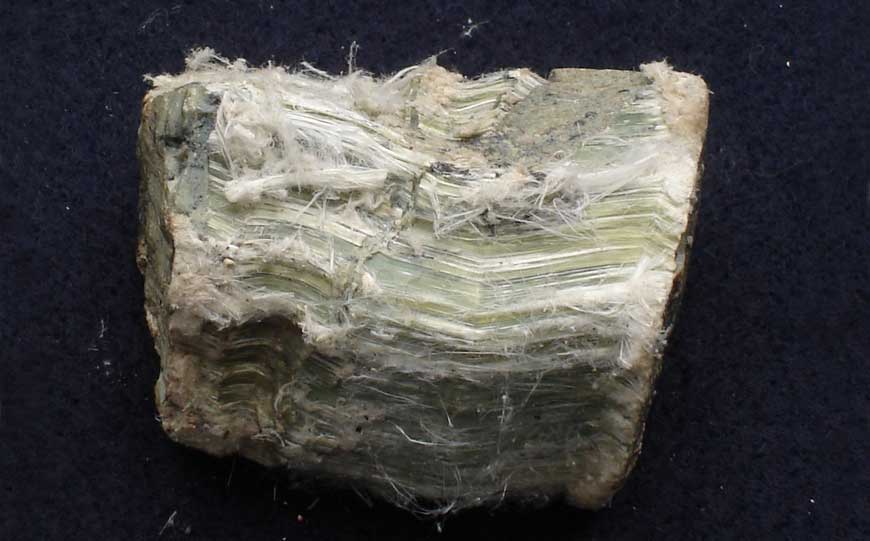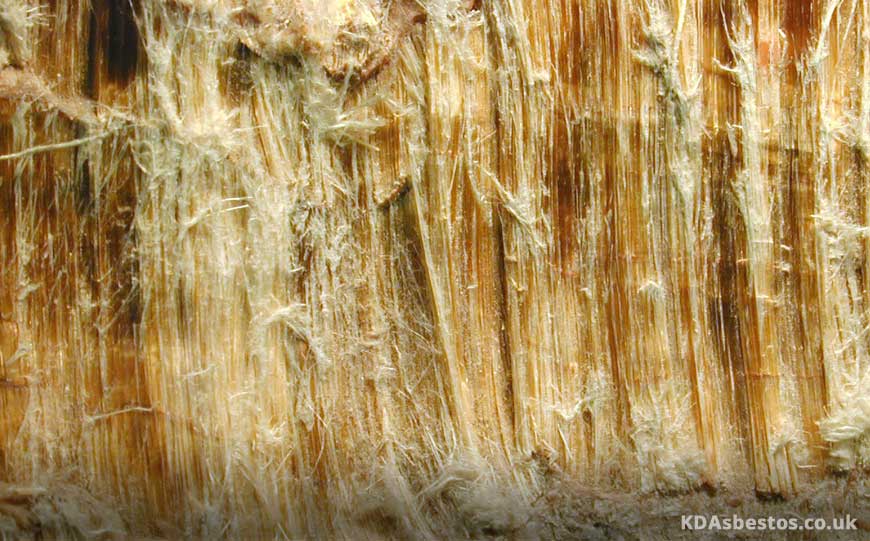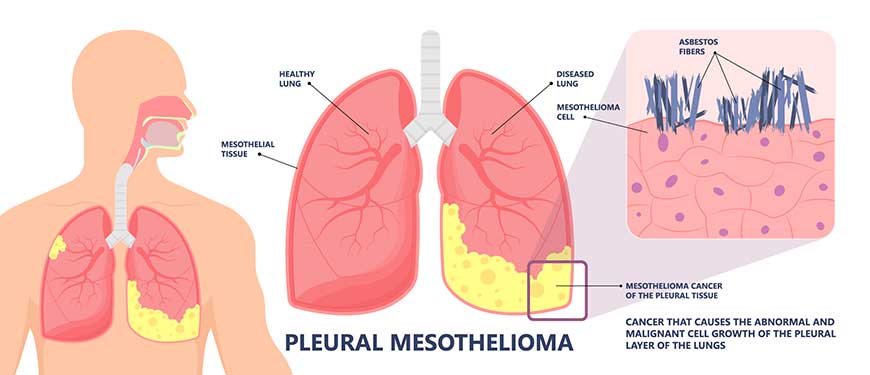
White asbestos, also known as chrysotile, is a type of asbestos that’s part of the serpentine subgroup of fibrous silicate minerals.
It has a greyish white colour and a fibrous texture that makes it easy to spin and weave into fabrics.
It’s characterised by its fine, curly, and highly flexible texture.
In this article, we take a deeper look into what white asbestos is, where it was typically used and if it poses a danger to health.
Table of Contents
What is the Chrysotile Group of Minerals?

Chrysotile. Image credit: Eurico Zimbres
The chrysotile family is a group of minerals classified as part of the serpentine sub-group.
The group includes several different minerals, with the most common in the group being chrysotile, which is also known as white asbestos.
Chrysotile is typically found in serpentine rock formations, which are commonly associated with ultramafic rocks such as dunite and peridotite.
These rock formations can be found in a variety of settings, including mountains, plateaus, and volcanic regions.
Other minerals in the group include:
- antigorite
- lizardite
However, antigorite and lizardite are not known to be carcinogenic and are often used in industrial applications as a chrysotile substitute.
Antigorite is typically found in metamorphic rocks and is used in refractory materials and ceramics.
Lizardite is found in ultramafic rocks and is used in the production of lubricants and drilling muds.
Where was White Asbestos Used?

Due to its fire and heat-resistant properties, it was commonly used in construction materials and industrial applications
Some of the most common uses of white asbestos includes:
Insulation
White asbestos was widely used as an insulation material in buildings, sea vessels, and industrial equipment.
It was often used as pipe lagging, boilers, and other high-temperature equipment.
Roofs & Flooring
White asbestos was commonly used in roofing materials, including shingles and roofing felt.
It was also used in vinyl floor tiles and ceiling tiles.
Automotive
White asbestos was used in brake linings, clutch facings, and gaskets in cars and other vehicles.
Textiles
White asbestos was used in the production of textiles, including clothing and blankets, to make them more heat-resistant.
Industrial Applications
White asbestos was used in a variety of other industrial applications, including cement products, electrical components, and fireproof coatings.
Due to its link to serious health problems, including lung cancer and mesothelioma, the use of white asbestos has been severely restricted in many countries including the UK, where it was banned on the 24th August 1999.
White asbestos exposure can cause a wide variety of symptoms which can lead to lung cancer, mesothelioma, and other respiratory diseases.
Is White Asbestos Dangerous to Health?

Image credit: Shutterstock
White asbestos is a known carcinogen and can be extremely dangerous to human health.
When asbestos fibres are inhaled, they become lodged in the lungs and cause a variety of health problems, including lung cancer, mesothelioma, and asbestosis.
Exposure to asbestos usually occurs in occupational settings, such as in industries where asbestos is mined, manufactured, or used in various products.
However, people can also be exposed to asbestos in their homes or other buildings if asbestos containing materials are disturbed or become friable, releasing dangerous fibres into the air.
It may take several years for the health problems associated with exposure to white asbestos to develop, and they can eventually become fatal.
When inhaled, white asbestos fibres can get stuck in the lungs, leading to inflammation, scarring, and damage to lung tissue.
This can eventually lead to the development of lung cancer or mesothelioma, which is a rare and aggressive cancer affecting the lining of the lungs and other organs.
Asbestosis is another respiratory disease that is caused by exposure to asbestos fibres and is characterised by scarring of the lung tissue, resulting in breathing difficulties and reduced lung function over time.
The UK has prohibited the use of blue asbestos due to its severe health hazards.
To minimise the risk of exposure to asbestos containing materials, it’s crucial to follow appropriate safety precautions, such as wearing protective gear and adhering to proper handling and disposal procedures.
It’s recommended to avoid handling any material suspected of containing white asbestos and to seek the services of a licensed asbestos removal contractor for safe removal and disposal.
Conclusion
Although white asbestos, also called chrysotile, is just one of several types of asbestos, it is the most hazardous to human health.
If you suspect that your home, property, or building contains materials that may contain chrysotile, it’s essential to contact an asbestos removal specialist to perform an inspection and conduct asbestos testing.
After a comprehensive asbestos survey, you’ll have a better understanding of whether the material can remain in place or requires safe removal.